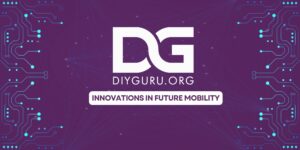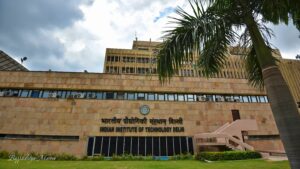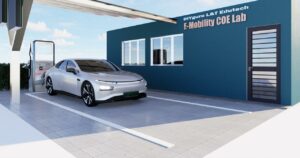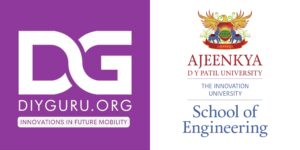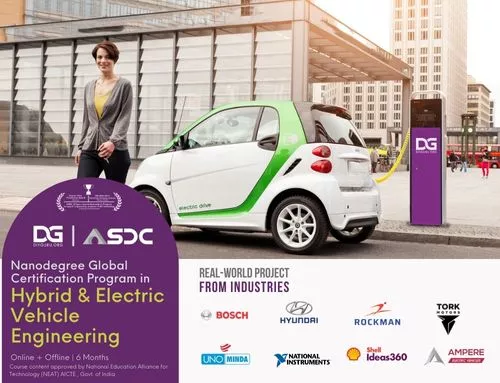Electric Vehicle Nanodegree Program
Online | Offline | Blended
Approved by National Education Alliance for Technology (NEAT) AICTE , Govt. of India
Empanelled by Automotive Skills Development Council
Total number of courses offered: 13+
Number of projects: 4+ minor and 4+ major projects
Hands on experience: 2 * 7 day workshop [~70 hours] (detailed information to be shared soon)
Software targeted: MATLAB/SIMULINK, SOLIDWORKS, ANSYS, Optimum Lap, SimScale
Total duration to complete the program: ~ 550+ hours
Computational Skills: Python programming language & data analytics
DIYguru & InNoVaTiOn
DIYguru not only focuses on the static technical knowledge in the domain of EV, but also gives equal attention to the importance of innovation. The domain of innovation would be abridged without the scope of commercialisation. DIYguru addresses the value of these aspects, and aims to work with industrial partners, to incorporate the possibility of innovation labs, incubation support and business models from scratch. While it is essential to work on such innovation labs setup for the EV enthusiast, it is critical to self introspect the technical resources of DIYguru and analyze how our vision and existing resources can channelize the technical knowledge of participants, such that they can initiate and maintain the essence of innovation within themselves, and how their innovation can be directed into an evident business model. The following information below, highlights how the different domains of EV (as covered by DIYguru technical team) would play a critical role in commencing or embarking the sense of innovation within its participants, and how these domains could reinforce our vision or motive of working in the domain of innovation labs and business-oriented incubation.
Vehicle Architecture-
Vehicle Architecture forms the backbone of Electric Vehicle development process. Transition from ICE to EV requires new Chassis platforms which distribute the weight of all new components, lower CG and at the same time can incorporate range of EV models with lower costs. This helps to lower upfront manufacturing costs and needs minimal changes to Vehicle architecture.Few example of such platforms are MEB(Modular Electric drive Matrix by Volkswagen), Global EV platform from GM,eTNGA(Toyota Electric New Generation Architecture )CMF(Common Modular Family) architecture from Renault-Nissan and e-GMP(Global Modular platform ) from KIA. Though the initial investment is high but with lot of cost saving potentials as turn around time for developing new vehicles is reduced.
Innovation Capability-
DIYguru Course offers a basic understanding of all components Making up an EV. Our aim is to foster innovation and trigger innovative mindset with variety of students from different background undertaking these courses. With Vehicle architecture, one can think of the Location of Components such as Battery, Motors in such a way that it can enable either Rear or Front or All-wheel drive vehicles. For this simulation of vehicles, Load distribution is necessary. Along with which how these architectures can host a range of Battery packs sizes and motor components with minimal changes can lead to the integration of different vehicle families on the same architecture.DIY guru courses offer Simulation and Analysis courses where students can learn to optimize different EV components.With various hands-on projects, students get an opportunity to channel their thoughts to the product development process by presenting various Weight optimizing options pertaining to components placed on EV architectures. This is not only limited to the location of Batteries and Electric motors but also finalizing which battery cells to use, motors to select, and integration of these components towards the product development process.
Vehicle Dynamics-
Since Electric power trains have started becoming commercially available their impact on vehicle performance has become equally important.The integration of Electric power train with Vehicle dynamics and control systems is going to be an important area of research.This integration can be discussed in terms of Roll,Pitch and Yaw plane of vehicle as all these are couples planes and impact Ride ,Handling and Stability Performance of the vehicle.Similarly, energy regeneration/consumption capability is also coupled with Vehicle dynamics and controls.In future transportation technologies integration of controlled subsystems which were earlier independent and open-loop will become closed loop ( e.g.Cruise control will pave way for Adaptive cruise control ).The key component which connects electric vehicle performance with vehicle dynamics is an electric motor.
Innovation opportunities–
Electric motors have three basic performance attributes.
1) Responsive to torque or speed demand
2) Reversible – works as motor or generator
3) Energy efficiency is more than 90%
DIYguru EV courses offer a deep dive into electric motor technologies and control.The students work on modeling and analysis of Motors in softwares such as Ansys or MATLAB to analyze its performance from different aspects.Another area of innovation in vehicle dynamics is controlling vehicle motion using torque vectoring.This replaces traditional differentials with individual motors mounted on each wheel to control torque output.This opens a huge opportunity for innovative minds to analyze how vehicle will react to torque change and how it affects dynamics stability of vehicle.DIY guru offers Fundamental of vehicle dynamics course which presents an opportunity to understand different dynamic aspects of vehicles.Here we have discussed only about one technology.Similar to this there are multiple areas such as Vehicle Braking and regeneration ,Integration of different sensors for Longitudinal and Lateral control of vehicle such as Lidar,Camera,Radar and how it helps vehicle either maintain lanes or give alerts or stops vehicle automatically based on the obstacle.Many such technologies will be there on EVs and offer tremendous research scope for candidates.The truth is the future is going to CASE where C-Connected (technologies) A-Autonomous S-Shared and E is Electric mobility and in each of these technology, Vehicle Dynamics has huge role to explore tremendous opportunities in terms of SiL,HiL technologies.Future is truly Electric.
Battery Management System, Energy Production & Storage.
Energy storage is an important concept while designing an Electric vehicle. It’s the powerhouse of the whole machine that gives energy to each and every system present in the vehicle. The Modern Electric cars and bikes come with Lithium ion battery packs which are made up of combination and configuration of hundreds and thousands of Lithium ion cells of different construction and chemistries. Each and every cell needs to be monitored and quantified for the optimum performance of the battery.
DIYguru briefs and procures the necessity of technology required for battery design and monitoring. The Battery Management system (BMS) course is based on the complete walk around of BMS used in a four-wheeler. The Design and Development of technology used in four-wheeler BMS is implied on the understanding of the state of health, performance, thermal management, safety and communication with battery powered components. The course covers topics such as:
- Data Acquisition
- Battery Monitoring Unit and Battery Control Unit
- Contractor control
- Active cell and Passive cell balancing
- BMS protection
- Cell Modeling and BMS modeling using Simulink
DIYguru also covers the concept of designing the battery pack from scratch to the final product. The selection criteria of battery cells, chemistries, construction and energy requirements. Configuring the combination of cells in series and parallel on the basis of energy density, weight and volume density. The Designing of the battery pack on the basis of electrical, mechanical and thermal modes of failure. Assembling, testing and validating the battery pack and the standards required for testing of lithium ion battery pack. The complete design and analysis of the battery pack before the development as per the project requirements. The course covers topics such as:
- Battery parameters and cell characteristics
- Electrical design of Battery pack
- Mechanical design of Battery pack
- Heat transfer and thermal management
- Assembling and testing
- Design and modeling of battery pack using Simulink and ANSYS
These modules and topics will enhance the creativity and innovative skills of the learner to approach with different designs for the optimum and finesse performance of its battery pack. The understanding of BMS and battery pack design will stronghold the energy storage management and regeneration of the energy consumed by the vehicle. The selection of proper cells, cell balancing, combination and thermal management will make a safe and economic battery pack with high energy rating.
Powertrain:
When climate change is the main concern, the atmost sustainability is needed in the field of automotive industry in term of fossil fuel combustion, where Electric Vehicle with shortened acronym as EV took the important alternate option. In this transition of ICEV to pure EV [The only propulsion is provided by motor from a single energy source electricity] the Hybrid vehicle took birth [ propulsion energy is supplied from different energy sources].
With the unveiling of the National Electric Mobility Mission Plan 2020, manufacturers are adopting electric vehicles in an attempt to reduce our dependence on imported oil. The ambitious plan aims to produce 6-7 million electric vehicles by 2020 with an estimated fuel savings of 2.2-2.5 million tons. Vehicle manufacturers in India have a tough road ahead in meeting this goal and tailoring electric vehicles for the Indian market.
The global low-speed vehicle market is projected to grow at a CAGR of 8.6% to reach a market size of USD 6.3 billion by 2025 from 4.2 billion in 2020. The global low speed electric vehicle market was valued at $2,395.8 million in 2017, and is projected to reach $7,617.3 million by 2025, registering a CAGR of 15.4% from 2018 to 2025.The key factors driving the global low-speed vehicle market are increasing the rising trend of using LSV in gated communities, hotels & resorts, industrial facilities, golf courses & college campuses.
In this era of technology, the future is going to be truly Electric. EV system integration is going to CASE where C-Connected (technologies) A-Autonomous S-Shared and E-Electric mobility and in each of these technology modeling and system integration part has a huge role to explore tremendous opportunities in terms of SiL,HiL,MiL technologies.
DIYguru supports it’s students so that, irrespective of all the different architecture of EV, students can utilize their thoughts in specific domains with different softwares like MATLAB/SIMULINK(including ADVISOR, Quasi Static Simulation toolbox, etc.) , PSIM, SolidWorks, AutoCAD, ANSYS, HyperWorks, OptiStruct, RICARDO, Altair Flux and many more.
The whole course curriculum from DIYguru is designed in such a way that it covers all the prerequisite knowledge required for students to have various opportunities and innovation in the field of
- ~Battery Technology,
- ~HV system designing & construction,
- ~Harnessing,
- ~Retrofitting,
- ~Energy Management System,
- ~Thermal modeling,
- ~Finite Element Analysis,
- ~Powertrain Sizing,
- ~Motor designing,
- ~Charging system,
- ~Suspension & Vehicle Dynamics,
- ~Vehicle Designing,
- ~Embedded systems and software engineering,
- ~Driving Cycle analysis,
- ~Safety Standards,
- ~Vehicle Testing, etc.
DIYguru is also assisting their students to incubate/commercialize business models out of their innovative ideas in this field of Electric Vehicle providing them support, infrastructure, guidance and other things.
DIYguru understands the Role Of Soft Skills in Innovation & Incubation
We’re aware of the criticality of the hard skills that are required by the professionals to excel in their domain be it technical or not. As hard skills are the very core of your daily work and considering that is your expertise.
What we somehow miss is the required emphasis on the soft skills that professionals must equip themselves with in order to excel in their fields irrespective of the domain they belong to. Today, we’ll understand how crucial it is to have the right soft skills to excel in the technical fields, but before that we shall get a glimpse on what all comprises in the soft skills.
Soft Skills and their Importance
Soft skills are skills which deal with communicating with the people around, having a sense of emotional intelligence, and such. Some of the crucial soft skills and its impact which shall be ingrained by the professionals are as follows:
Critical Thinking: It is the ability to cerebrally analyze and conceptualize while absorbing information.
Public Speaking: It is the act of delivering information to the audience effectively.
Emotional Intelligence: It is an art of perceiving and handling emotions in the right manner.
Teamwork: It is when a group of members jointly perform a task that has a compounded effect.
Interpersonal Relation: This involves how good your relationship is with several people involved.
Problem Solving Skills: The process through which an individual solves a given problem through the right approach.
Leadership Skills: It encompasses an individual’s ability to lead. It could be a group, work, initiative, or organization.
Flexibility: It is an individual’s ability to stay agile in a given situation almost instantly and effortlessly.
Decision Making: It reflects the capability of a person in taking the right decision through a structured approach while effectively analyzing the given situation.
Conflict Management: It demonstrates an individual’s ability to resolve conflicts through sound listening and effective decisions after a thorough analysis.
Every professional shall inculcate the given soft skills to better express themselves and their work.
How soft skills help Innovation and Incubation
Innovation is referred to as the creation of something new, it could be a process, a product, or any services. On a similar line, Incubation is to provide an environment to favorably develop something.
So, when we talk about incubation in terms of startups, then that refers to the incubators that support the growth of a startup. Startups receive following supports through incubators by providing:
Partnership opportunities
Funding avenues,
Mentoring assistance,
Operational allowances, and so on.
It’s apparent that a certain level of innovation is always present in any startup as startups are known to be backed up by innovations and therefore require incubation support to further flourish and grow. Therefore, innovation and incubation go hand in hand.
Let’s explore different scenarios where the importance of soft skills is amplified in various ways such as:
When we talk about startups looking for partners to collaborate with, one has to reflect the teamwork skills the employees have, the leadership skills that one possesses, and sharing the concept of their work with their vision and mission in the most effective manner. So, despite having the best innovations ingrained in your products and services, you might end up with fewer partnership opportunities and therefore resulting in a threat to your funding avenues as well.
When looking for mentoring assistance from the leaders across the corporate world or some monetary assistance required for your current engagements, it is always important to master up your soft skills to better present your work and establish worthy credibility to all your stakeholders involved.
Retrofication
In automobile engineering, Retrofication is the replacement of a car’s combustion engine and connected components with an electric motor and batteries, to create an all-electric vehicle.
This method is being used extensively in Europe to convert diesel trucks and buses into zero-emission CVs as it has helped reduce carbon emissions within big cities while also reducing congestion.
In 1993, India’s first three CNG stations were opened in Delhi for private and commercial vehicles. In1998 decision by the Supreme Court of India to phase out diesel buses from the roads of Delhi. The then-record levels of pollutants in the air compelled the Supreme Court to grant relief to the citizens. The bench proposed that the highly polluting buses be either taken off the roads or the diesel engine be replaced with a cleaner alternative. Retrofit it with Compressed Natural Gas (CNG). This policy decision enabled the successful conversion of more than 30 lakh vehicles to CNG. Now, let’s jump back to the present day. Even though the amount of emissions per vehicle is decreasing due to improvements in technology, pollution levels are rising once again as the number of vehicles is increasing to meet the growing population. In such a situation, a similar policy can be expected from the government. A similar wave is fast reaching the shores of our nation again and this time it is retrofitting commercial vehicles into 100% electric.
Not one, not two, But many benefits of vehicle electrification.
1:- Reduce the emissions of vehicles that are already on the road, as electric vehicles do not produce any emissions themselves.
2:- Reduce operations cost as the cost of electricity per km is significantly less when compared to petrol or diesel
3:- Reduce the vast amount of waste created when cars reach the end of their lifecycle – as older cars or those written off after a road traffic accident are typically scrapped. This creates a considerable amount of metal, plastic and fabric waste, and uses a large amount of energy to recycle discarded parts into useful materials.
4:- The maintenance cost of an Electric vehicle is considerably less than that of an ICE vehicle
How to Retrofication
Now that we know what retrofitting is, we can now learn what is needed to retrofit your vehicle.
The 1st step:- Make sure that vehicle’s internal components are working or not? Elements such as the transmission shaft must not be broken or cracked.
The 2nd step:- Remove all ICE-related hardware. Including engine, fuel tank, muffler, exhaust, starter, and radiator. They will be replaced by myriad components, the most important of which is the electric motor. The size of the motor used will depend primarily on the size of the vehicle, expected performance, and weight.
The 3rd step:- The battery pack, the powerhouse of electric vehicles. One would need to decide between a lead-acid battery and a lithium-ion battery. Lead-acid batteries used in golf carts are often installed, although they generally provide a slim operating range on a single charge.
The 4th step:- lithium cells, which are smaller and lighter and can enable longer ranges but are more expensive and require more protection electronics on board. How many batteries will be required will depend on the vehicle and the available space in which they are to be fitted. You’ll also need a power controller to regulate the flow of energy between the battery and the motor, a charging system to replenish the batteries via an electric circuit, wiring harnesses, and myriad other components.
The total cost will depend on the vehicle you’re modifying, the range, and the type of performance you’re expecting.
An EV Conversion kit includes?
- Motor
- Controller
- Shunt
- Transmission adapter kit
- Charger
- Chill plate
- DC/DC converter
- Throttle controller
- Controller mount.
DIYguru very well understands the role of retrofitted EVs in the ever-changing market of EV industries, and to support this evolving advancement, DIYguru is now launching the MAKERS CAMPAIGN 3.0. The Makers campaign of DIYguru has been one of our identities, as DIYguru initiated its operation with Campaign 1.0. Continuing this progress, the Campaign 3.0 has the capability to help the EV evolution in India and greatly focuses on the domain of EV retrofitting. More details are given below at the end of this document.
Elective subjects in Data Analytics and Python Programming language
DIYguru realizes the importance of analytics in every industrial/research domain. Irrespective of the field of work, the professionals are in a position to get themselves comfortable with the domain of data analytics. To accompany this requirement, DIYguru has the following modules for the participants, to enable them, prepare themselves in the fields of data preparation, analysis, visualization and presentation, via the Python programming language.
WHAT are the learning outcomes?
- To enhance the employability of students, keeping in mind the ever rising demands of programming minds and experience of analysis!
- To start from scratch! And make you gain all major skills in the domain of Python and data analysis.
- To make you feel motivated and encouraged and gather the theoretical background knowledge necessary for the learning process of python and data analytics.
- To make you understand the data. To make you understand the requirements and to make your experience, how you can use your domain to upskill your job opportunities.
- To understand and work on essential libraries of data analysis.
- To understand and work on the concepts of data wrangling, data filtering, data cleaning, data transformation, shaping, combining, plotting, and aggregation.
- To work with practical examples and understand all major functions you require to analyze data.
- To combine the knowledge of python with data analysis and utilizing the python data structures to understand and manipulate data.
- To make your work and understand the visualization libraries, with the aim to report and present the analyzed data more efficiently.
Course 1: Introduction to PYTHON and Data Analysis
In this course, students will be introduced to the python programming language and the concept of data analysis. How data analysis has become one of the most important skills for students in different areas. How data analysis and Python, is useful in every domain, ranging from mathematics to physics, from computer science to electrical engineers. Every second company works with data, and so, requires professionals, who can understand their data and can play with them! This course will bring out the understanding and motivation to start a career in data analysis using python.
Course 2: Basics Of Python
This course will focus on the basics of the python language. Since python is currently the most used language for data analysis, it is essential to cover all basics of python language. This course will start from level zero and will take students to the level, where students could program independently and implement the concept of variables, user inputs, loops, error handling, operations, conditionals, functions, and statements. Students will be working on the number of assignments and developing smart programs. The focus will be to bring confidence among students, to upskill themselves to higher python programming expertise.
Course 3: PYTHON Intermediate- Data Structures and Advanced
Working with python basics will give students flexibility to upskill and upgrade their python knowledge to a higher level. This will give you more understanding of analyzing and manipulation data with python concepts in more detail. This course will take the student’s expertise to the next level, where students would be able with more advanced examples and more sophisticated concepts. The students will work on essential concepts of strings, file systems, lists, dictionaries, and tuples. Moreover, the students will work with a large number of examples and will be given numerous tasks and assignments. These courses will enable students to analyze and work with apparently endless data! students will be able to work independently over a large number of sophisticated applications. These data structures will build a strong foundation for the ideal start of data analytics.
The course will also enable students to be ideal candidates for python developer profiles. This course will help students to think beyond the commonly used algorithms and concepts. Students will be able to work on topics, such that they could retrieve and process databases right from the web! Students will work, extract, and access the data from the web APIs. In order to access different data forms, students will be taught the art of ‘regular expressions’ so as to define their own formula to retrieve the text from the thousands of data lines over any website. Students will work on different protocols and will implement their learning over different web data formats. Students will be introduced to the concept of OOPs programming in python and SQL.
Course 4: Data Analytics Basic: Numpy and Introduction to Pandas
With the perfect knowledge in the python programming language, here comes the perfect time to make the transition into the domain of data analytics. The beginning of the course will enable students to recollect and revise the previously learned python structures, necessary to begin with data analytics. One of the most important libraries to be able to understand data is the library Numpy. Understanding data in the form of arrays and accessing them and manipulating them in array form will give you the foundation to learn higher-level libraries in incoming courses. This course will focus on giving students that essential foundation. The students will then dive into the heart of analysis! The pandas! Students will cover the concepts of series, data frames, and performing essential operations and manipulations indexing, filtering, sorting, correlating arithmetic, and so on.
Course 5: Data Analytics Intermediate and Visualization
In this course, students will work more extensively on analyzing data.students will work on the main areas of data loading, cleaning, preparation, data wrangling, transforming data, and data aggregation. The actual analysis comes here! Students will work on numerous examples, and will continuously work on random datasets to see how each function is applicable. This course will cover the actual analysis of datasets and will be able to apply the functions and algorithms in any possible manner based on their requirements. Finally, students will cover the concept of ‘time-series’ enabling students to analyze stuff in different terms of time intervals.
This course will also give students the kickstart! A push to dive into the world of visualizations. Certainly, this course will be the easiest of all, as the actual analysis has been previously done in the past courses. Students will learn, how to report and present their results with the use of graphs and charts. The most fundamental library ‘matplotlib’ will be the main library we will focus on here. Students will then be introduced to the ‘seaborn’ library, easing out the visualization tasks. Students will work on different graph types of line plot, histogram, density plot, scatter, bar plots, and point plots. Since matplotlib and seaborn have limited usage, students will be introduced with the more advanced and interactive library of ‘plotly’, where students will work on more interactive visualization methods. From there, students are free to explore more on their own … a perfect ending!
Total number of Hours ~ 30 hours (technical content) + 20 hours (project work)
Project-Based Learning:
With every course curriculum, DIYguru ensures equal importance to the practical exposure. Therefore, every student gets the opportunity to work on a minimum of one minor and one major project. Maximum, each student can work on 4 minor and 4 major projects as well! The project phase starts at the end of the 2nd month of lectures. With each project, the teams are created based on following parameters:
|
|
|
|
Once the project teams are ready, every team presents their synopsis and project update via weekly update sessions. To assist each student personally, each team is assigned with a technical mentor. The mentor is responsible for the following activities:
|
|
|
|
|
|
Once a student completes his/her assigned project, the team presents their final project and the DIYguru offers the final major project to the qualified students.
The same methodology is followed during the major project. However, major projects require more attention and skills, and therefore, with the completion of a major project, each participant shall receive an additional certificate of completion of the project (along with the training certificate). With every project, DIYguru ensures that the team members gain relevant skill sets and organizational/research abilities
Currently, the technical team plans to offer the 5-7 options as minor projects and major projects each, and every participant is required to select atleast one project from each list respectively. 4 of the offered options as examples are given as follows:
| Minor Project: (~ 4 * 15 = 60 hours) |
| Project 1: Convert an existing ICE four-wheeler to an electric vehicle. |
| Project 2: Vehicle Modeling of an Electric bike with specific specifications. |
| Project 3: Modeling and Simulation of lithium cell parameter |
| Project 4: H Bridge Motor controller using MATLAB |
| Major project: (~ 4 * 30 = 120 hours) |
| Project 1:Design of Electric Motorcycle |
| Project 2:Design of Solar Powered Charging Station |
| Project 3:LI-Ion and BMS modeling for controlling fault events |
| Project 4:Modeling and Analysis of Complete EV in Matlab & Simulink |
| LIVE SESSIONS: weekly 2-3 hours ( 120 hours) |
| Once a week, the students shall have a minimum of one technical session (of duration 2-3 hours), where the instructors will teach the domains of electric vehicles, currently important in the automobile industries. |
| This includes the ongoing development in the electric vehicle market, the current research in the automobile industry, the latest topics not included in recorded lectures, and so on. |
| With every live session, there will be a doubt session, and a project update session, where each project team will present their project progress on a weekly basis. In case a student fails to perform in a project, the technical team pays extra attention and allows that student to switch projects to improve his/her performance. In specific, the following flow in terms of project support is provided.
The total number of hours (complete Nanodegree program by DIYguru) ~ 300+ hrs |
For inquiries, contact us.
www.diyguru.org
hello@diyguru.org
011-42340578
India:
(HQ) 374, MG Road, Delhi – 110030
DIYguru, Pragathi Mahalakshmi Building 62, Bengaluru
Indus University, Ahmedabad, Gujarat 382115
MIT, ADT University, Pune, Maharashtra
CMR Technical Campus, Hyderabad
Bangladesh:
DIYguru, Level 6, Niketan, Gulshan, Dhaka 1212
Malaysia:
DIYguru, No 06-01 Jalan Padan, Johar Bahru



